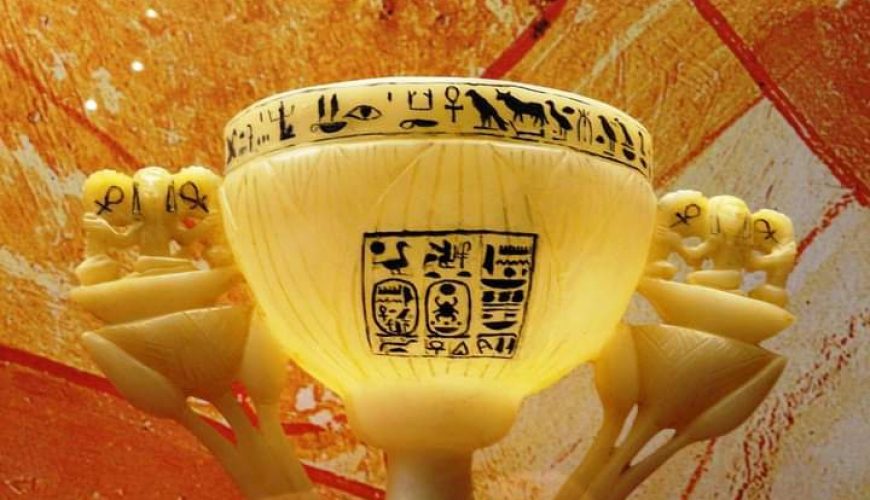Howard Carter had found it in the tomb of Egyptian King Tutankhamun of the Eighteenth Dynasty New Kingdom – Finding No. 014 and currently on display in the Egyptian Museum in Cairo with store number JE 67465.
Dimensions: Height 18cm – Diameter 17cm Width 30cm
The lotus cup was one of the first things Carter and his team found at the entrance to Tutankhamun’s tomb. The bowl was located just behind the entrance to the corridor that leads to the small room, where it fell smashed to the ground, and certainly, this was not its original place.
The wishing cup is carved from one piece of alabaster and takes the shape of a blooming lotus flower, while the hands on the two sides are identically carved, representing a lotus flower in the process of growth. In each hand, HeH holds a palm leaf to count the years, and the frog sits on the Shen ring – this is the typical description of a god of millions of years because the palm leaf means his age in hieroglyphs while the Shen ring and the frog’s chick are symbols of immortality.
At the end of each palm frond, we find the ankh sign of life, so this cup symbolizes the eternal and infinite life of King Tutankhamun. In the open white flower centre, the king’s name symbolizes his rebirth like the sun god who emerged from the lotus after the lotus grew on the eternal hill Noun.
Howard Carter copied the inscriptions and asked Sir Alan Gardner to translate them:
The lotus flower, which represents the cup, bears the coronation name of the king (Neb Khapero-Ra), the lord of the forms of Ra and the birth name of Tutankhamun. The living image of Amun – may be the beloved of Amun-Ra, the lord of the thrones of the two lands (Neb Nisut Tawi), the lord of heaven (Nebbet).
Starting from the middle with the ankh and from left to right, the line reads:
Long live Horus, the mighty bull, with blissful birth – the two goddesses, beautiful decrees, rulers of the two lands – the golden Horus, wearing crowns pleasing to the gods, king of Upper and Lower Egypt, Lord of the Two Lands (Neb Khabro Ra) has life
Starting from the middle with the ankh and from right to left, the line reads:
Long live your soul (Kaak) and reach millions of years – you are the one who loves his goodness so that your face may meet the north wind and your eyes see happiness.
Egypt Magic – Alabaster Cup or Cup of Wishes
July 6, 2021
0 comment


Comment (0)